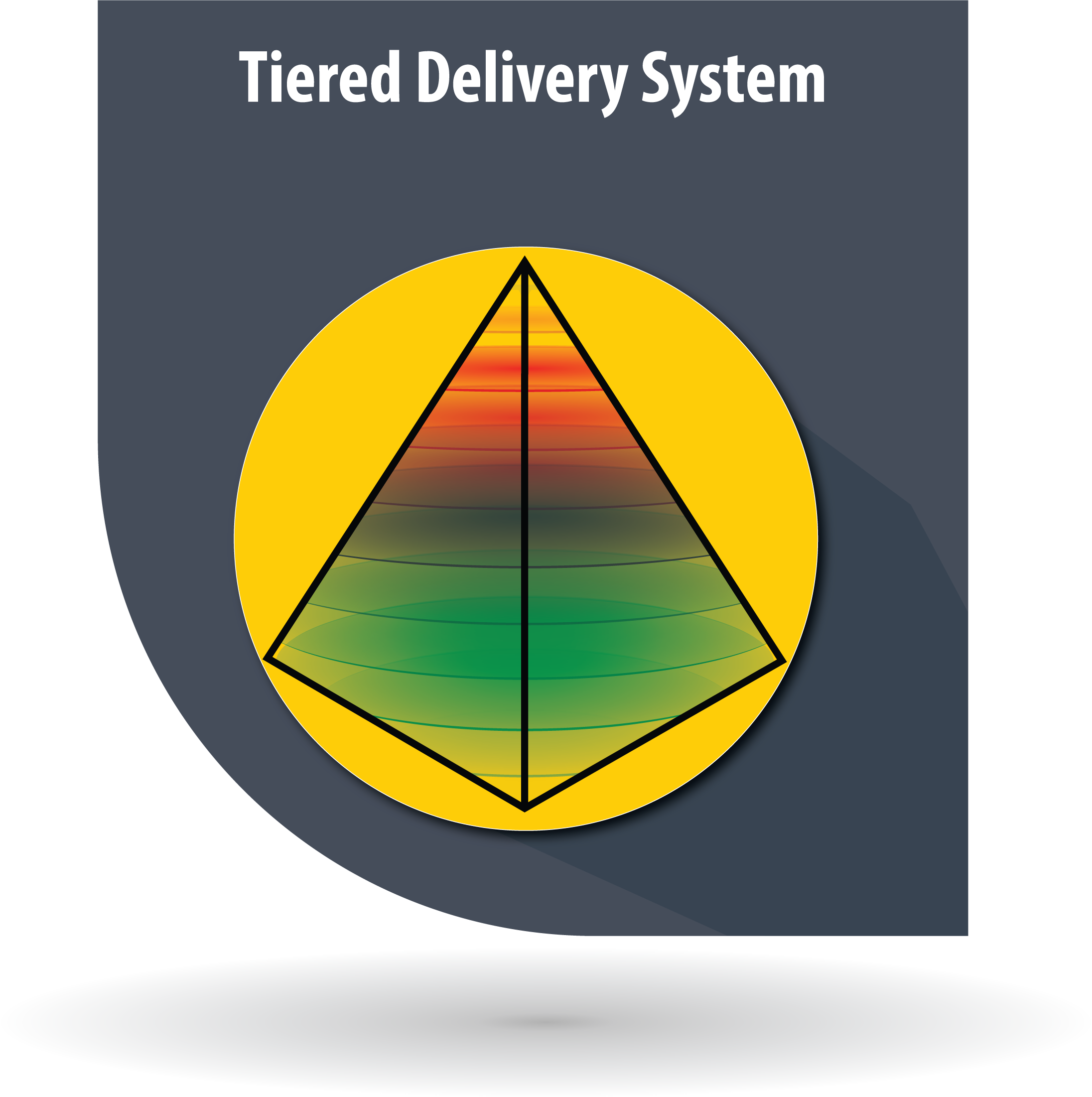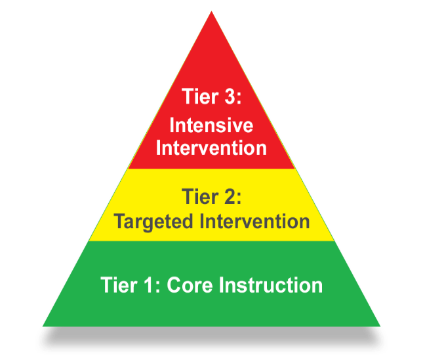Tiered Delivery System

Overview
The multi-tiered approach provides a responsive framework that helps to match academic, social-emotional, and behavioral instruction, intervention, and supports of all students. The tiers are intended to be layered with increasingly intensive supports matched to learner needs. MTSS is not a specific “model” but a framework of effective practices, interventions, and system change strategies that have empirical support and individually have been demonstrated to be effective.
An important component of the tiered framework is the quality of Tier 1 (i.e., the core curriculum), where all students receive high-quality instruction that is culturally and linguistically responsive and aligned to Montana state achievement standards. In a well-designed MTSS system, Tier 1 instruction should be effective and sufficient for about 80% of the student population. When screening indicates a student needs additional support to be successful, evidence-based interventions of moderate intensity are provided. These Tier 2 interventions, which are in addition to the core instruction, typically involve small-group instruction and intervention to address specific identified problems. Students who respond adequately to Tier 2 support return to Tier 1 (the core curriculum) with ongoing progress monitoring. Students who show minimal response to Tier 2 instruction receive additional Tier 3 support, which is more intensive and individualized.
- Tier 1 is the research-based instruction and classroom interventions that are available to all learners and
 effectively meet the needs of most.
effectively meet the needs of most.
- Tier 2 are evidence-based supplemental, targeted interventions intended for some learners who require support beyond Tier 1.
- Tier 3 supports provide intense individual interventions for a few learners with highly accelerated, or severe and persistent academic and/or non-academic needs.
Why it’s Essential
The framework of a multi-tiered approach provides for efficient and effective allocation of resources. When appropriately used, the tiers support each learner to experience success by meeting their unique needs. Salient to this preventative approach are universal screening, a high quality core instruction, progress monitoring, increasingly intensive tiers of intervention, and fidelity of implementation.
Implementation
Core practices that characterize effective implementation of tiered delivery of supports include:
- High-quality core instruction is in place that meets the academic, social-emotional, and behavioral needs of most students (80%).
- Guidance is provided to faculty and staff to ensure effective use of modeling, practice opportunities, feedback, re-teaching, assessment, intervention, cultural and linguistic responsiveness as part of instruction.
- Well defined systems are in place to facilitate systematic assessment, data-informed decision-making, progress monitoring, and fidelity of implementation.
- A continuum of interventions is available that include criteria for matching the student to the right evidence-based intervention, quick access, intervention protocols, progress monitoring, and monitoring for fidelity of implementation.
- Communication systems are in place for all stakeholders (educators, students, families, community, etc.) regarding the current status and student progress.
- High-quality professional learning opportunities are provided to enhance the use of differentiation and effective classroom practices, and to guide instruction and learning across the tiers.
For more detailed information on Tiered Delivery Systems, review the Montana MTSS Essential Components.
Resources